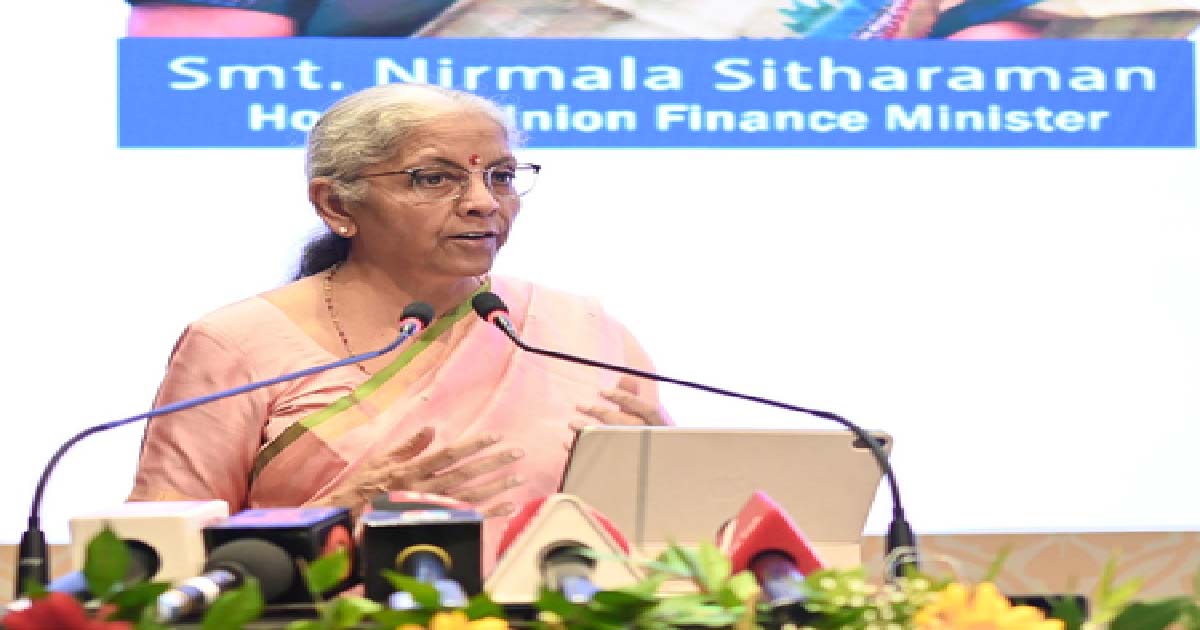Business
Stock Outlook 2022: FMCG, pharma, IT sectors seen as ‘safe and satisfying’ bets
With uncertainties facing Indias equity markets next year, top analysts have termed sectors such as FMCG, pharma and IT services, along with real estate, power, infra, and telecom as ‘safe and satisfying investment options in 2022.
Factors such as growth potential, price as well as evolving economic recovery have made these sectors more attractive than others.
“Given the uncertainties, one can focus more on defensives (FMCG, pharma, IT services) till there is more clarity on economic growth and inflation across the globe. This is despite the fact that defensives may not be cheap,” said Deepak Jasani, Head of Retail Research, HDFC Securities.
“In case the markets continue to underperform, these sectors may provide downside protection as they may fall less than the market or other sectors,” he said.
According to Vinod Nair, Head of Research at Geojit Financial Services, strong outlook sectors like pharma have undergone decent consolidation.
“Similarly, FMCG and telecom look good. Long-term outlook of IT is robust and has undergone a phase of time correction. New growth and theme sectors like renewables, electronics, textiles, and chemicals look good on a long-term basis, which are settling from high valuations,” Nair said
Besides, other sectors such as real estate, power, infra, capital goods and banking will be eyed keenly by the investors.
“If I talk about the real estate sector, there is a turnaround story after 10 years of underperformance where the last five years were very painful due to demonetisation, NBFC crisis, RERA etc., but things are looking very bright now thanks to low-interest rates, stamp duty cuts, supportive government policies and consolidation in the industry due to RERA,” said Sunil Nyati, Managing Director at Swastika Investmart.
“Similarly, power, infra and capital goods are coming out of 14 years of ‘Vanvas’, and the market has started celebration for this, which is likely to continue for the next couple of years because there is valuation comfort as well as strong growth outlook,” Nyati added.
On the other hand, financials, auto, metals and aviation stocks might lose favour in the coming year.
“Markets around the world are already trading at all-time high, and most of the economies are trying to reach the pre-Covid levels. So, one can avoid auto sectors, as all over the world, the auto industry is struggling with chip shortage and supply may not meet the demand till the second half of 2022 or first half of 2023,” said Gaurav Garg, Head of Research, CapitalVia Global Research.
“Second is the aviation sector, which is still struggling to make a comeback, especially with many countries still imposing bans on other countries, which may be witnessed until there is a clarity on the new mutation,” Garg added.
Jasani pointed out that over-owned sectors like financials, auto, metals, among others, may keep underperforming for some time even as investors re-weight their portfolios in favour of emerging or safer stocks.
Business
FM Sitharaman embarks on Bhutan visit to deepen economic, developmental cooperation

New Delhi, Oct 30: Union Finance Minister Nirmala Sitharaman on Thursday embarked on an official visit to Bhutan to further deepen economic and developmental cooperation between the neighbouring countries.
The visit of the Indian delegation from the Department of Economic Affairs, Ministry of Finance, is slated from October 30-November 2, according to an official statement.
The visit underscores India’s enduring partnership with Bhutan, rooted in mutual respect, trust, and shared commitment to progress and prosperity in the region, it added.
Finance Minister is scheduled to call on the King of Bhutan, Jigme Khesar Namgyel Wangchuck, and Prime Minister Dasho Tshering Tobgay.
She will also hold a bilateral meeting with the Bhutan Finance Minister Lekey Dorji to discuss avenues for further strengthening India-Bhutan economic and financial cooperation.
FM Sitharaman will begin her official tour with a visit to the historic Sangchen Choekhor Monastery, established in 1765 and home to over 100 monks engaged in advanced Buddhist studies, according to the statement.
She will visit and observe several key projects being implemented with support of the Government of India. These include the Kurichhu Hydropower Plant Dam and Powerhouse, the Gyalsung Academy, the Sangchen Choekhor Monastery and Punakha Dzong.
Sitharaman will attend presentations on key developmental initiatives, including the energy sector of Bhutan by Druk Green Power Corporation Limited (DGPC); Bhutan’s 21st Century Economic Roadmap; Banking/Financial sector in Bhutan by Druk PNB and the Bank of Bhutan; and The Gelephu Mindfulness City project
The Finance Minister will also visit the Cottage and Small Industries (CSI) Market, where she will witness a transaction using India’s Unified Payments Interface (UPI), reflecting the growing digital and financial connectivity between the two nations.
According to the official statement, Sitharaman will visit the Punakha Dzong — Bhutan’s second-oldest and second-largest dzong.
On the way to the Punakha Dzong, she will also interact with Bhutanese farmers to understand their agricultural practices, challenges, and opportunities.
Business
IMW 2025: PM Modi to spell out reforms in maritime sector today

Mumbai, Oct 29: Prime Minister Narendra Modi will address the Maritime Leaders Conclave and chair the Global Maritime CEO Forum at India Maritime Week (IMW) 2025, on Wednesday, during which he will spell out the reforms in the maritime sector.
The Global Maritime CEO Forum, the flagship event of IMW 2025, will bring together CEOs of global maritime companies, major investors, policy-makers, innovators, and international partners to deliberate on the future of the global maritime ecosystem. The Forum will serve as a key platform for dialogue on sustainable maritime growth, resilient supply chains, green shipping, and inclusive blue economy strategies.
PM Modi in his post on X on Tuesday said, “Looking forward to being in Mumbai tomorrow, 29th October, to attend programmes relating to the ongoing India Maritime Week 2025. I will speak at the Maritime Leaders Conclave and also chair the Global Maritime CEO Forum. This is a great forum to build collaborations in the maritime sector and highlight India’s reforms in the same.”
The Prime Minister’s participation reflects his deep commitment to an ambitious, future-oriented maritime transformation, aligned with the Maritime Amrit Kaal Vision 2047. This long-term vision, built on four strategic pillars – port-led development, shipping and shipbuilding, seamless logistics, and maritime skill-building – aims to position India among the world’s leading maritime powers.
IMW 2025 serves as the Union government’s premier global platform to translate this vision into action, bringing together leading stakeholders across shipping, ports, shipbuilding, cruise tourism, and blue economy finance, said the government release.
Under the theme ‘Uniting Oceans, One Maritime Vision’, the conclave, which began on October 27, will conclude on October 31. It will showcase India’s strategic roadmap to emerge as a global maritime hub and a leader in the Blue Economy.
IMW 2025 will draw participation from over 85 countries, featuring more than 1,00,000 delegates, 500+ exhibitors and 350+ international speakers.
Meanwhile, Union Minister for Ports, Shipping and Waterways Sarbananda Sonowal on Tuesday said that India’s maritime sector forms the backbone of its economy, with over 95 per cent of the nation’s trade by volume moving through the sea. Under the Net Zero by 2070 commitment, India aims to reduce carbon emissions per ton of cargo by 30 per cent by 2030 and 70 per cent by 2047, making the sector a key driver of climate action.
Minister Sonowal emphasised that flagship initiatives such as the Sagarmala Programme, Maritime India Vision 2030, Harit Sagar Guidelines, and the Maritime Amrit Kaal Vision 2047 place sustainability, innovation, and climate responsibility at the core of India’s maritime growth.
“As we look toward Amrit Kaal 2047, our goal is not only to expand maritime capacity but also to make it greener, smarter, and more resilient,” said Minister Sonowal.
“With our unique geography along key global trade routes, India is poised to become a hub for green shipping corridors, connecting domestic and international markets through clean energy trade,” he added.
India’s first national shore-power standard will enable vessels to draw clean electricity while docked, significantly reducing port-side emissions. Ports like Jawaharlal Nehru Port Authority (JNPA) are leading the shift with battery-powered trucks and electric logistics systems toward zero-emission operations, said the minister.
“The maritime transition cannot be achieved in silos – it demands partnership among governments, industry, financiers, and technology leaders,” Minister Sonowal said.
“Together, we can ensure that the seas that connect us also unite us in purpose – to create a future where maritime trade drives both prosperity and sustainability,” he noted.
Business
India-EU FTA: Brussels delegation in New Delhi next week to achieve ‘constructive conclusion’

New Delhi, Oct 29: To advance the ongoing free trade agreement (FTA) negotiations, the EU technical team, led by Director General for Trade Sabine Weyand, will visit India next week with the objective of achieving a “constructive conclusion based on the potential solutions identified over the past two days”, an official statement said on Wednesday.
Union Commerce and Industry Minister, Piyush Goyal, visited Brussels from October 26-28 and had productive and meaningful engagements with Maros Sefcovic, European Commissioner for Trade and Economic Security and his team on outstanding issues related to the ongoing India-EU FTA negotiations.
“Both sides reaffirmed their shared commitment to conclude the India-EU FTA by the end of 2025, following the clear direction from Prime Minister Shri Narendra Modi and President of the European Commission Ursula von der Leyen during the College of Commissioners’ visit to New Delhi in February 2025,” according to the official statement.
The engagement focused on achieving a mutually beneficial, balanced and equitable trade agreement, reflecting the depth of political trust and the strategic ties between India and the European Union, and at the same time respecting each other’s sensitivities and priorities.
The statement further said that India recognises the importance of ensuring that the FTA remains balanced in addressing both tariff and non-tariff barriers and creating transparent and predictable regulatory frameworks that accelerate trade for both partners in the coming years.
There was intensive engagement to explore possible landing zones on the outstanding issues.
There was also a good discussion on India’s concerns on Non-Tariff Measures and the new EU regulations. During the negotiations, Goyal emphasised the need for preferential treatment for India’s key asks, particularly those with respect to labour-intensive sectors.
Both sides agreed to work closely to finalise the non-sensitive industrial tariff lines. They also agreed that issues related to Steel, Auto, CBAM, and other EU regulations still require further discussion, as these issues have higher sensitivities.
“India looks forward to working closely with the European Union to transform this vision into reality through shared innovation, balanced, equitable, and meaningful trade, and a collective commitment to peace and prosperity,” the statement noted.
-

 Crime3 years ago
Crime3 years agoClass 10 student jumps to death in Jaipur
-

 Maharashtra1 year ago
Maharashtra1 year agoMumbai Local Train Update: Central Railway’s New Timetable Comes Into Effect; Check Full List Of Revised Timings & Stations
-

 Maharashtra1 year ago
Maharashtra1 year agoMumbai To Go Toll-Free Tonight! Maharashtra Govt Announces Complete Toll Waiver For Light Motor Vehicles At All 5 Entry Points Of City
-

 Maharashtra1 year ago
Maharashtra1 year agoFalse photo of Imtiaz Jaleel’s rally, exposing the fooling conspiracy
-

 National News1 year ago
National News1 year agoMinistry of Railways rolls out Special Drive 4.0 with focus on digitisation, cleanliness, inclusiveness and grievance redressal
-

 Maharashtra12 months ago
Maharashtra12 months agoMaharashtra Elections 2024: Mumbai Metro & BEST Services Extended Till Midnight On Voting Day
-

 National News1 year ago
National News1 year agoJ&K: 4 Jawans Killed, 28 Injured After Bus Carrying BSF Personnel For Poll Duty Falls Into Gorge In Budgam; Terrifying Visuals Surface
-

 Crime1 year ago
Crime1 year agoBaba Siddique Murder: Mumbai Police Unable To Get Lawrence Bishnoi Custody Due To Home Ministry Order, Says Report














